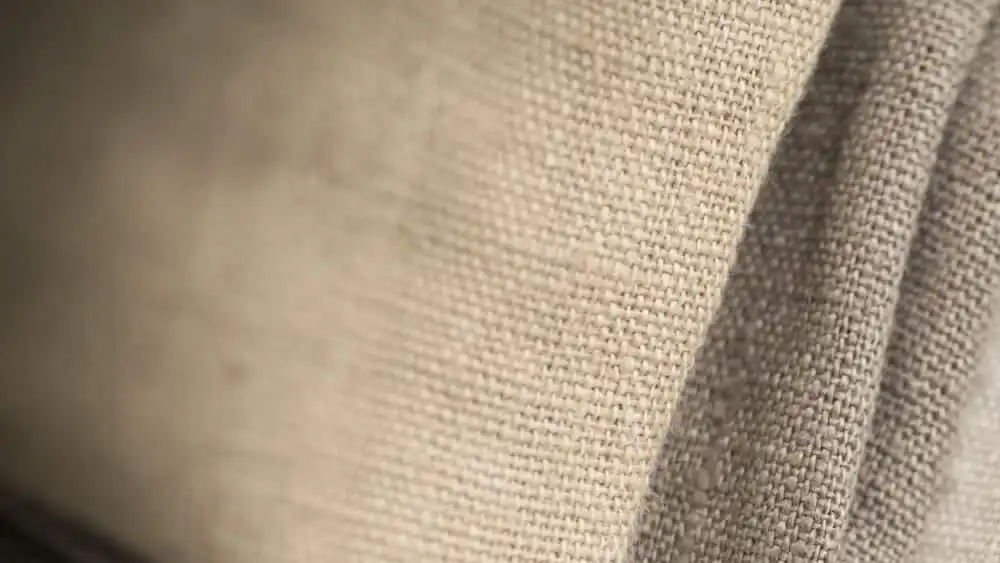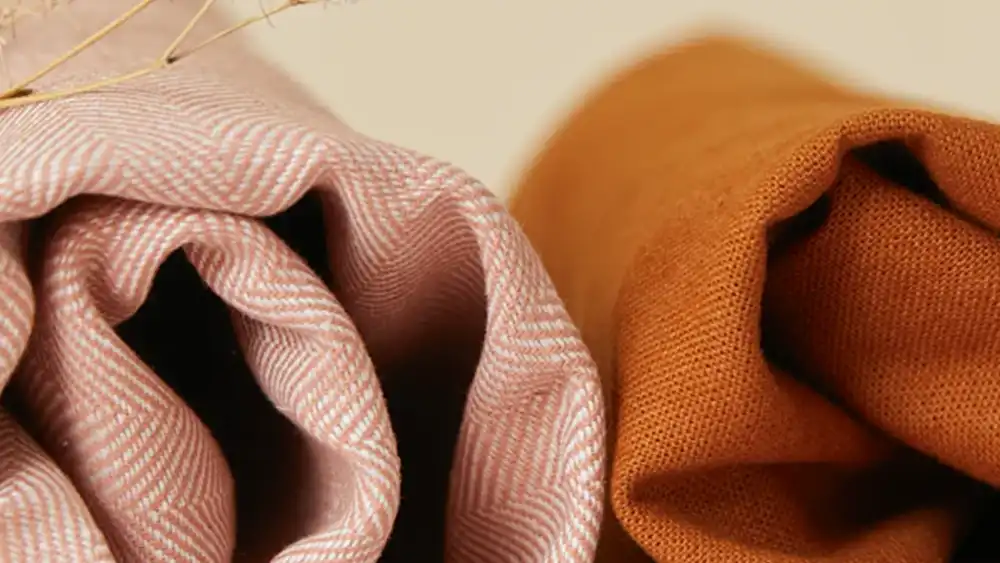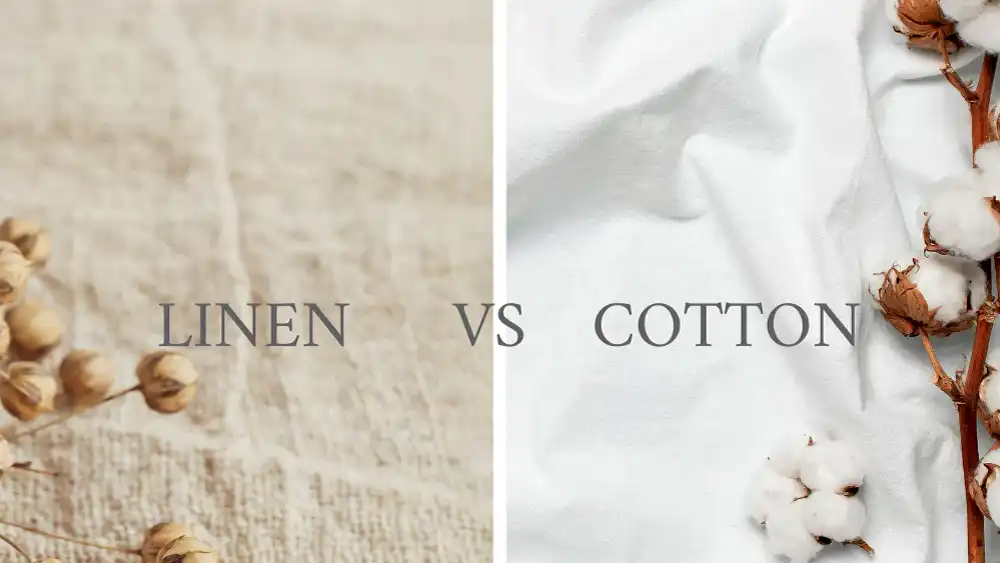In the ever-expanding world of eco-friendly and sustainable alternatives, two fibers have emerged as standout competitors: linen and hemp. Both are natural, highly durable, and require minimal environmental resources in their cultivation process.
Yet, they each carry unique qualities and attributes that make them special in their own right. Let us delve deeper into the comparison between linen and hemp fabrics.
Linen Fabric

Linens, derived from flax plants, have been a fixture in the textile industry for more than 6,000 years and have an undeniable presence in human history. The plant only grows for a single growing season, requiring no irrigation system and thriving in cooler regions with adequate sunlight. Linens are lightweight, breathable, and incredibly absorbent making them a popular choice for summer wardrobes and household items, especially bedding.
Hemp Fabric
On the other hand, hemp fabric is derived from cannabis sativa, a plant best known for its psychoactive variations but hemp, while closely related, contains less than 0.3% THC rendering it harmless and non-intoxicating. Hemp requires even less water, few pesticides, and no industrial fertilizers to grow – making it highly sustainable and eco-friendly. Furthermore, hemp takes a shorter amount of time to grow, maturing in just 3-4 months as compared to flax, which needs a full growing season before harvesting.
Linen vs Hemp Fabric

Comparative characteristics between linen and hemp fabric include:
Breathability and Moisture Regulation:
Both linen and hemp are prized for their excellent breathability properties, helping to regulate moisture and maintain comfortable body temperatures.
Durability:
Both textiles boast impressive lifespans; linen averages between 20-40 years with proper care, whereas hemp can endure for at least 200 years. Hemp’s durability is attributable to the long fibers its stems produce, making them especially strong and long-lasting compared to linens.
Eco-Friendliness and Sustainability:
Thanks to its minimal water demands and resistance to pests, hemp truly outshines linen. For those environmentally conscious consumers or manufacturers looking for the most sustainable natural fiber option, hemp is clearly the front-runner in this department.
Flexibility and Texture:
Linens have a smooth yet slightly textured finish – giving garments a luxe appearance and tactile sensation on the skin. Hemp features a distinct, coarse quality to the touch, which can lend garments a distinct aesthetic that some may deem too rough for casual wear. Over time, however, hemp’s texture softens naturally.
Drying Time and Shrinkage:
Hemp dries quickly compared to linen since it retains less moisture upon exposure to air. Linens are renowned for their poor drying capabilities, taking time to dry in humid or inclement weather conditions. Regarding shrinkage, both fibers are largely resistant to shrinking, holding their shapes well over time but with slightly more shrinkage detected in linens.
| Feature | Linen | Hemp |
|---|---|---|
| Plant Source | Flax | Cannabis Sativa (but not the psychoactive kind) |
| Initial Feel | Slightly coarse, softens with washing | More coarse than linen, softens quickly |
| Durability | Very strong and long-lasting | Even stronger and more durable than linen |
| Breathability | Excellent, keeps you cool in hot weather | Excellent, keeps you cool in hot weather |
| Moisture Wicking | Excellent, absorbs moisture and dries quickly | Excellent, absorbs moisture and dries quickly |
| Wrinkling | Wrinkles easily | Wrinkles easily |
| Elasticity | More elastic than hemp | Less elastic than linen |
| Sustainability | Requires moderate water but no pesticides | Requires minimal water and no pesticides |
| Price | Generally more expensive | Can be similar or slightly less expensive than linen |
Additional Considerations
- Linen is known for its luxurious drape and luster.
- Hemp is naturally resistant to bacteria and mildew.
- Linen can be difficult to iron due to wrinkles.
Both linen and hemp are great choices for eco-conscious consumers who prioritize natural and sustainable materials. The best choice for you will depend on your specific needs and preferences.
Challis Fabric vs Linen

Here’s a comparison of challis fabric and linen:
| Feature | Challis Fabric | Linen |
|---|---|---|
| Fiber Source | Traditionally wool/cotton blend, now can be rayon, polyester or other fibers | Flax plant |
| Initial Feel | Soft and lightweight | Slightly coarse, softens with washing |
| Durability | Good | Very strong and long-lasting |
| Breathability | Good | Excellent |
| Moisture Wicking | Good | Excellent |
| Wrinkling | Wrinkles moderately | Wrinkles easily |
| Price | Moderate | Generally more expensive |
| Drape | Fluid and drapes well | Can be crisp or drapey depending on weight |
Additional Considerations
- Challis fabric is known for its smooth texture and ability to take prints well.
- Linen is a natural fiber and offers a more rustic look and feel.
- Challis may require hand-washing or delicate care depending on the fiber content, while linen can be laundered more easily.
Ultimately, the best fabric for your project will depend on the desired look, feel, and drape.
Cotton vs Linen Fabric

| Feature | Cotton | Linen |
|---|---|---|
| Plant Source | Cotton plant | Flax plant |
| Texture | Soft and smooth | Slightly coarse, softens with washing |
| Weight | Can be lightweight to heavyweight | Generally lightweight to mediumweight |
| Durability | Durable, but can pill over time | Very strong and long-lasting |
| Breathability | Excellent | Excellent |
| Moisture Wicking | Absorbent | Excellent |
| Wrinkling | Wrinkles moderately (depends on weave) | Wrinkles easily |
| Care | Easy to care for, machine washable | May require gentle washing or dry cleaning |
| Cost | Generally affordable | More expensive than cotton |
Additional Considerations
- Softness: Cotton generally feels softer initially, while linen softens over time.
- Warmth: Cotton can be more insulating, especially in heavier weights. Linen is cooler due to superior breathability.
- Versatility: Cotton comes in a wider variety of weaves, weights, and colors. Linen offers a more natural, rustic aesthetic.
- Wrinkles: Linen wrinkles more easily but often adds to its relaxed charm. Cotton wrinkles depend on the weave (percale wrinkles less than sateen).
Choosing Between Cotton and Linen:
- Softness and ease of care: Choose cotton.
- Durability and hot weather comfort: Choose linen.
- Balance of softness and wrinkle resistance: Consider a cotton-linen blend.
Lyocell Fabric vs Linen

| Feature | Lyocell Fabric | Linen |
|---|---|---|
| Origin | Semi-synthetic, made from wood pulp | Natural fiber from the flax plant |
| Texture | Smooth and silky | Slightly coarse, softens with washing |
| Durability | Good, strong but not quite as strong as linen | Very strong and long-lasting |
| Breathability | Excellent | Excellent |
| Moisture Wicking | Excellent | Excellent |
| Wrinkling | Wrinkles less than linen | Wrinkles easily |
| Care | Easy to care for, machine washable | May require gentle washing or dry cleaning |
| Sustainability | Considered a sustainable option due to closed-loop production process | Requires moderate water but no pesticides |
| Price | Generally more expensive than linen | Generally more expensive |
Additional Considerations
- Softness: Lyocell is known for its luxurious softness right from the start, while linen needs washing to soften.
- Drape: Lyocell has a beautiful drape, similar to silk. Linen can drape well depending on the weight, but may have a more crisp look.
- Dyeing: Lyocell takes dye well and maintains color vibrancy. Linen also dyes well.
- Moisture Management: Both fabrics wick away moisture, but linen may feel drier due to its superior airflow.
Choosing Between Lyocell and Linen:
- Softness and drape: Choose lyocell.
- Durability and hot weather comfort: Linen offers similar breathability but might be slightly more durable.
- Wrinkle resistance: Lyocell wrinkles less.
- Price: Both are on the pricier side, with linen potentially being slightly less expensive.
- Sustainability: Both are good options, but lyocell boasts a closed-loop production process.
Ramie Fabric vs Linen
| Feature | Ramie Fabric | Linen Fabric |
|---|---|---|
| Plant Source | Rhea plant (China grass) | Flax plant |
| Initial Feel | Can be rougher than linen, softens slightly with washing | Slightly coarse, softens with washing |
| Durability | Stronger than linen, even when wet | Very strong and long-lasting |
| Breathability | Excellent, keeps you cool | Excellent, keeps you cool |
| Moisture Wicking | Very absorbent, dries quickly | Excellent, absorbs moisture and dries quickly |
| Wrinkling | Wrinkles moderately | Wrinkles easily |
| Sheen | Can have a subtle silky sheen | May have a subtle luster |
| Care | Can be machine washed, may wrinkle more easily than linen | May require gentle washing or dry cleaning |
| Sustainability | Requires more processing than linen but still considered eco-friendly | Requires moderate water but no pesticides |
| Price | Can be similar to or slightly less expensive than linen | Generally more expensive |
Additional Considerations
- Softness: Linen generally feels softer initially and softens more over time compared to ramie.
- Wrinkles: Ramie wrinkles moderately, but the wrinkles can be more prominent than in linen.
- Weight: Ramie fabrics can be woven finer than linen, creating lighter and more sheer garments.
- Dyeing: Ramie takes dye well and holds color well.
- Abrasion Resistance: Ramie is less abrasion-resistant than linen when dry.
Choosing Between Ramie and Linen:
- Durability and hot, humid weather: Choose ramie for its superior strength and moisture management.
- Softness and drape: Choose linen for a softer feel and potentially better drape depending on the weight.
- Wrinkle resistance: Linen might wrinkle slightly less than ramie.
- Price: Ramie can be a more affordable option.
- Sheen: If you prefer a subtle sheen, ramie offers a silkier look.
Viscose Fabric vs Linen
| Feature | Viscose Fabric | Linen |
|---|---|---|
| Origin | Semi-synthetic, made from regenerated wood pulp (cellulose) | Natural fiber from the flax plant |
| Texture | Soft and drapes well, can be silky or matte depending on the finish | Slightly coarse initially, softens with washing |
| Durability | Good, but weaker than linen, especially when wet | Very strong and long-lasting |
| Breathability | Good | Excellent |
| Moisture Wicking | Absorbent, but not as good as linen | Excellent |
| Wrinkling | Wrinkles moderately, depending on the weave | Wrinkles easily |
| Care | Easy to care for, machine washable with some limitations | May require gentle washing or dry cleaning |
| Sustainability | More sustainable than some synthetic fabrics, but production uses chemicals | Requires moderate water but no pesticides |
| Price | Generally less expensive than linen | Generally more expensive |
Additional Considerations:
- Softness: Viscose is known for its luxurious drape and soft feel right from the start.
- Warmth: Linen is cooler due to superior breathability. Viscose can be slightly warmer, especially in heavier weights.
- Versatility: Viscose comes in a wide variety of weaves, weights, and colors, similar to cotton. Linen offers a more natural, rustic aesthetic.
- Dyeing: Both fabrics take dye well.
Choosing Between Viscose and Linen:
- Softness and drape: Choose viscose for a luxurious feel and flowy garments.
- Durability and hot weather comfort: Choose linen for its strength and superior breathability.
- Wrinkle resistance: Viscose may wrinkle slightly less than linen.
- Care: Viscose is generally easier to care for.
- Sustainability: Both have pros and cons, with linen being the more natural option.
- Price: Viscose is generally more affordable.
Linen vs Woven Upholstery Fabric
| Feature | Linen | Woven Upholstery Fabric |
|---|---|---|
| Fiber Content | Natural (flax plant) | Varies (cotton, wool, polyester blends, etc.) |
| Durability | Very strong and long-lasting | Can be very durable depending on the fiber content and weave |
| Breathability | Excellent | Varies depending on the fiber content and weave |
| Wrinkling | Wrinkles easily | Can wrinkle depending on the fiber content and weave |
| Care | May require professional cleaning or special care | Care instructions vary depending on the fabric |
| Price | Generally more expensive | Wider range of prices depending on the fiber content |
| Style | Classic and elegant | Wide variety of styles available |
| Pros | Durable, breathable, natural, stylish | Wide variety of options, can be durable and easy-care (depending on fiber content) |
| Cons | Wrinkles easily, may require special care, expensive, fades in sunlight | Breathability can vary, style can vary greatly |
Linen can be a great choice for upholstery fabric, but it’s not the only option when it comes to woven upholstery. Here’s a breakdown to help you decide:
Linen
Pros:
- Durability: Linen is a very strong and long-lasting natural fiber.
- Breathability: Excellent for hot weather as it allows air to circulate and keeps you cool.
- Natural: Eco-friendly and hypoallergenic, a good choice for those with allergies.
- Style: Offers a classic and elegant look that can elevate any room.
Cons:
- Wrinkles: Wrinkles easily and the wrinkles can be a defining feature of the fabric.
- Care: May require professional cleaning or special care instructions.
- Price: Generally more expensive than some other woven upholstery options.
- Fading: Can fade in direct sunlight.
Woven Upholstery Fabric (General)
Pros:
- Variety: Wide range of options available in terms of fiber content (cotton, wool, polyester blends etc.), weave patterns, colors, and textures.
- Durability: Many woven fabrics can be very durable depending on the fiber content and weave.
- Care: Care instructions can vary depending on the specific fabric, but some woven options may be easier to clean than linen.
- Price: Wider range of prices depending on the fiber content and blend.
Cons:
- Breathability: Breathability can vary depending on the fiber content and weave. Some synthetics may trap heat more than natural fibers.
- Style: The style can vary greatly depending on the chosen fabric.
Choosing Between Linen and Woven Upholstery Fabric:
- Consider your lifestyle: If you have pets or children and need a more stain-resistant and easy-care fabric, a different woven option might be better.
- Think about the look you want: Linen offers a classic and natural aesthetic, while woven fabrics offer a wider variety of styles.
- Climate: If you live in a hot climate, linen’s breathability is a big plus.
- Budget: Linen is generally more expensive than some woven options.
Here are some additional woven upholstery options to consider:
- Cotton: Natural, breathable, comfortable, and comes in a variety of weaves and colors. Can wrinkle and may not be as durable as linen.
- Wool: Luxurious, naturally flame-resistant, durable, and comfortable. Can be more expensive and requires special care.
- Synthetic blends: Often combine polyester with cotton or other fibers. Can be very durable, stain-resistant, and affordable. May not be as breathable as natural fibers.
Ultimately, the best choice for your upholstery depends on your specific needs and preferences. Consider the pros and cons of linen and explore the variety of woven upholstery fabrics available before making your decision.
